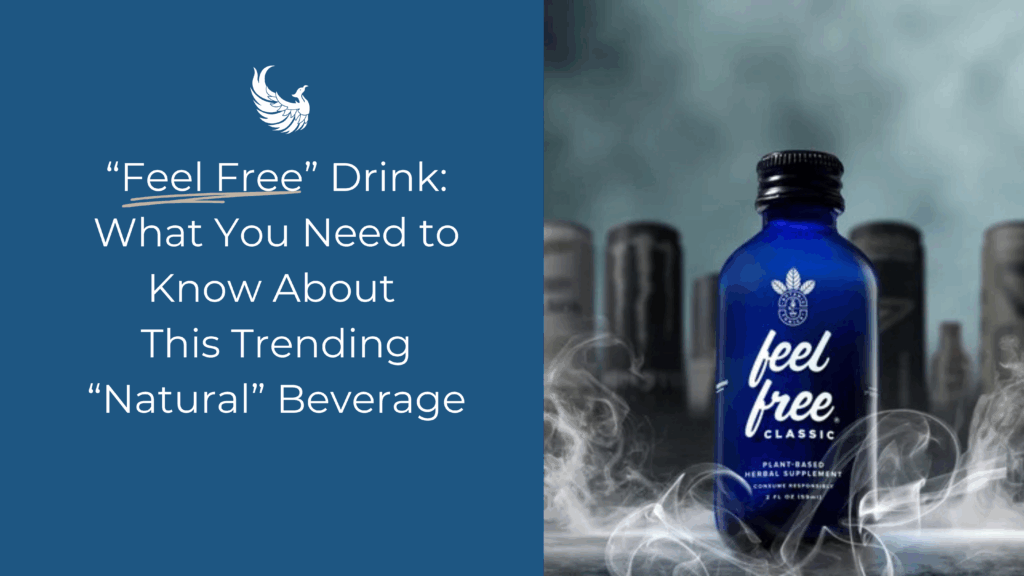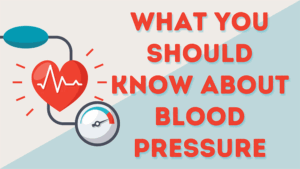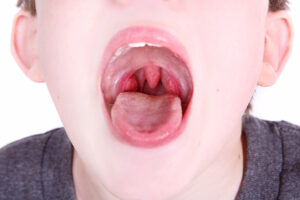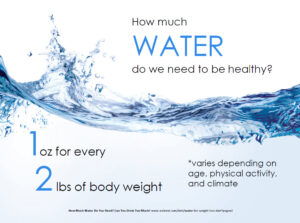Introduction: The Allure and the Alarm
You might think something called “Feel Free” would help you let go of stress—yet for many, it became the very thing that trapped them. The feel free drink addiction phenomenon is striking: what started as a natural, social alternative quickly morphed into daily dependency, emotional turmoil, and financial ruin. Let’s peel back the glossy veneer and uncover why so many found themselves unable to escape.
Background: What Is the Feel Free Drink?
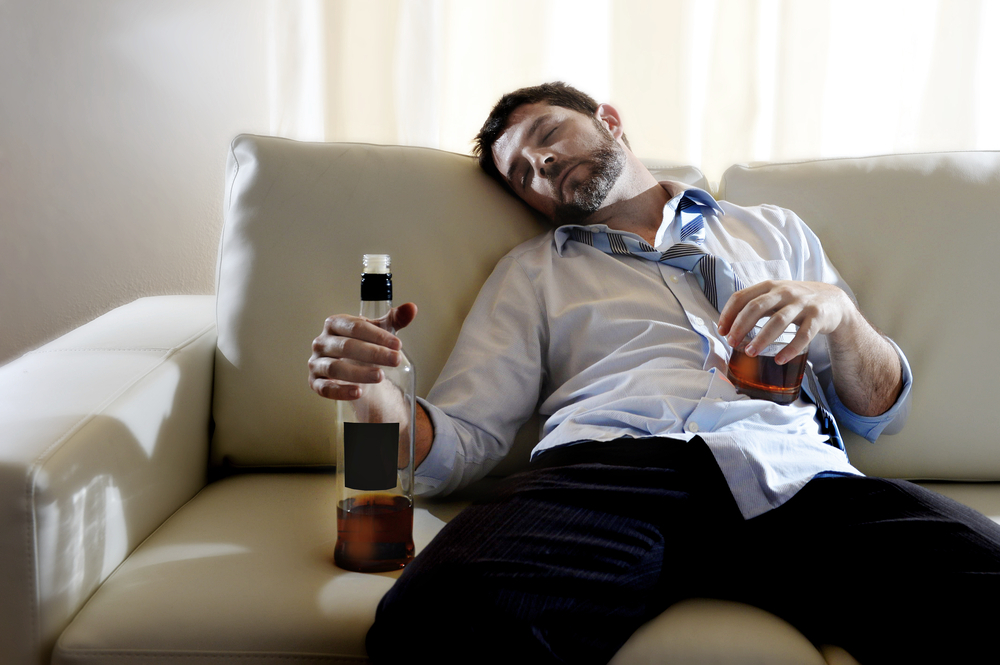
The “Feel Free” beverage, created by Botanic Tonics, is sold in small blue bottles and marketed as a plant-based, alcohol-free mood enhancer. It contains two potent botanical ingredients:
Kava – a relaxing agent acting on GABA receptors, similar to benzos
Kratom – an energy or euphoria-inducing stimulant acting on opioid receptors
This combo targets the brain’s reward systems—creating a cocktail-like effect that many found irresistibly smooth and social yet dangerously habit-forming.
Comparison: Marketing vs. Reality
| Claim | Reality |
|---|---|
| A healthy, sober alternative | Contains addictive kratom and sedative kava—powerful substances with real risk |
| Safe and natural | Potent neuroactive herbs; unregulated and poorly monitored |
| Casual occasional use | For many, use escalated quickly to daily and then compulsive consumption |
| Mood/euphoria without harm | Reported side effects include withdrawal, depression, anxiety, and physical decay (e.g., skin shedding, vomiting) |
Real Stories: Addiction, Debt, and Despair
Jasmine Adeoye – The Slow Snowball
Jasmine initially replaced alcohol with Feel Free during social events. Within a year, her consumption spiraled to 10+ bottles daily—costing her around $100 a day. Withdrawal symptoms felt like opioid-level “dope sickness,” and she describes physical decay like “flaking skin.” She ultimately went through six brutal months to reclaim herself
Lauren Albert – From Sober Mom to Rehab
As a sober mother, Lauren took Feel Free as a substitute during a family trip—but soon found herself drinking eight shots daily. The physical and emotional toll dragged her back into cocaine and rehab. It became “no better than any other drug.” Her post-addiction warnings are blunt: “It will ruin you financially, mentally… it is no better than any other drug.”
The Broader Market Reality
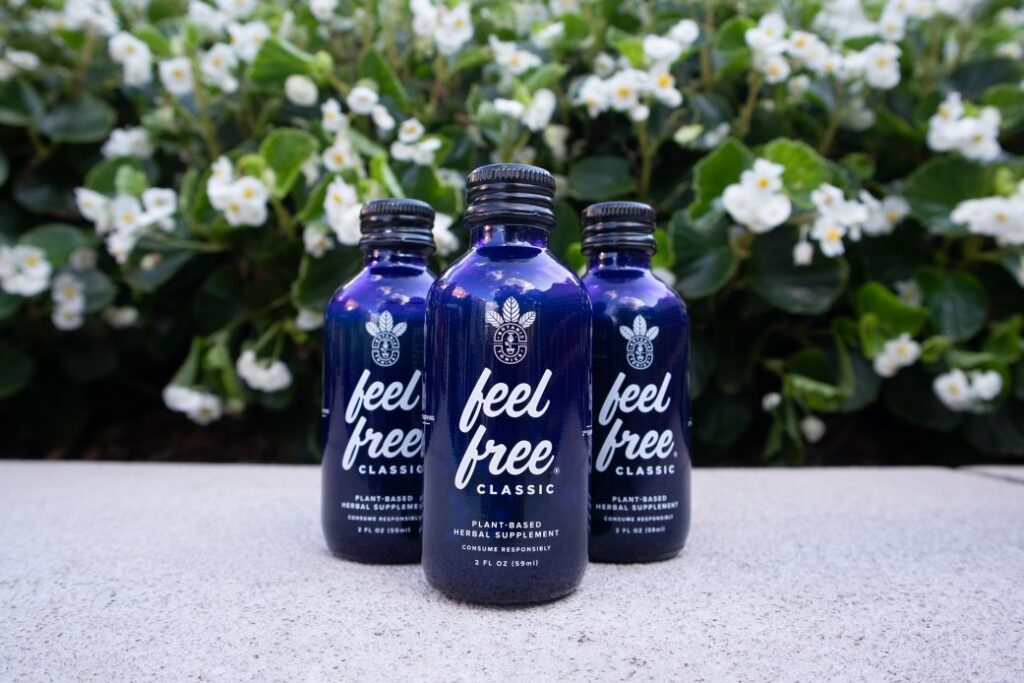
For many, Feel Free is just as addictive as opioids due to its kratom content. Despite being age-restricted and touted as a wellness staple, its widespread availability in gas stations, online, and wellness shops—sometimes even to minors—makes it dangerously easy to access.
Key Insights: Addiction, Regulation & Responsibility
1. Neurological Risk Profile
Kratom hooks into opioid receptors; kava calms via GABA receptors—together, they create a potent, confusing psychotropic blend. Addiction specialists and pharmacists strongly warn against mixing them.
2. Misleading Marketing
Ads emphasized sobriety-friendly, natural energy—but omitted clear warnings. Hashtags like #alcoholalternative co-opted sober-curious audiences, leading many into unanticipated addiction.
3. Escalating Use Patterns
Users often started informal—one bottle for mood or focus—but tolerance nudged doses higher and more frequent. For some, daily habits turned into full-blown dependence in months.
4. Severe Personal Consequences
Beyond finances—upwards of thousands monthly—users report depression, anxiety, physical symptoms, relapse with other drugs, and complete life derailment.
5. Calls for Regulation and Education
FDA and health experts are investigating kratom’s risk, and a class-action lawsuit resulted in enhanced labelling: clear kratom disclosure, age 21+ limits, warnings—late moves but necessary.
Personal Take: A Drink Not Worth the Trap
A friend shared how a “harmless wellness drink” quietly chipped away at her social boundaries. What started as casual use became ritualistic escape. Eventually she severed contact—but only after facing depressed motivation, financial bleed, and the bleak valley of withdrawal. Her recovery was empowerment—but it raised the alarm: natural doesn’t always mean safe.
Conclusion: Red Flags of Feel Free Drink Addiction
The feel free drink addiction phenomenon isn’t just a cautionary tale—it’s a call to reevaluate how we treat substances labeled “natural.” Kratom and kava might sound harmless, but the chemistry and addictiveness say otherwise. Regulation, transparent labeling, and consumer awareness are urgently needed.
Summary Takeaways:
Feel Free acts like a cocktail of opioids and benzos—subtle but potent.
The way it’s marketed to sober-curious consumers has masked its real addiction risk.
Escalation, withdrawal, rehab—are now common words in user stories.
Regulation is late, but finally arriving—but education must come first.
Call to Action
Have you or someone you know experienced feel free drink addiction? Share your story below—it matters.
If this opened your eyes, share it with a friend researching sober alternatives.
Interested in brewing healthier alternatives? Subscribe for safe, science-backed wellness ideas—no trap beverages allowed.
